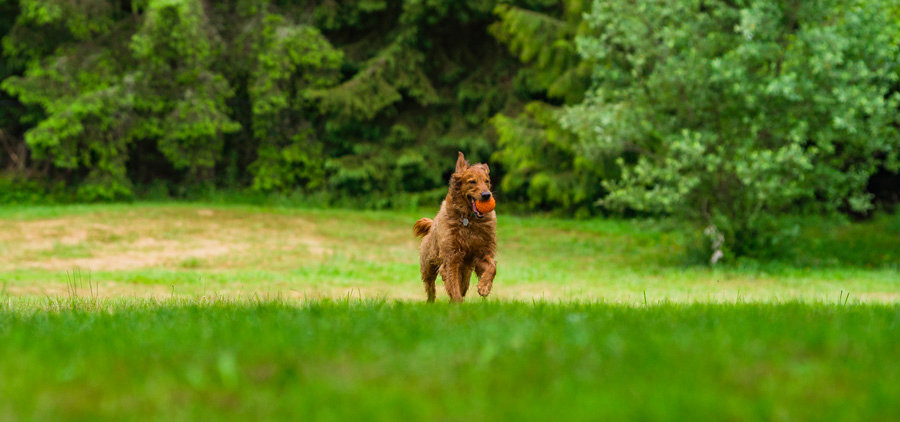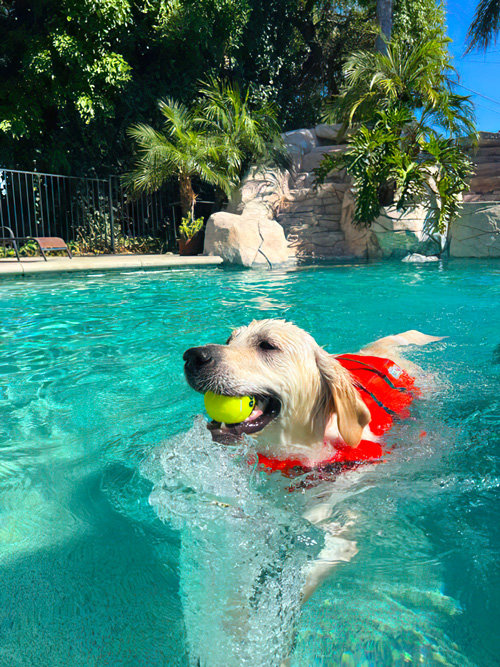What is Dog Sledding? Your Complete Guide

Dog sledding. It's the stuff of legends, inspiring movies like Eight Below and heroic tales like Balto's life-saving run. But what is dog sledding really all about beyond the Hollywood portrayal? This guide explores everything from the basics of mushing to specialized topics like types of dog sleds and sled dog training. We'll even touch on how to build a dog sled yourself. Ready to discover the real world of dog sledding? Let's go.
If you’ve ever wanted to learn more about dog sledding—or even wondered if your own dog has what it takes to participate!—we’ve got you covered.
Here’s your ultimate guide to everything sled dog. What’s the history of this longstanding type of transportation? How has dog sledding become a modern sport? Might it be a good fit for you and your four-legged companion to try out together?
What is dog sledding?
At its simplest, dog sledding is just what it sounds like. A single dog or sled dog team pulls a sled that contains a person, supplies, or both.
Someone who travels by dog sled can be called a musher, and dog sledding itself is often known as “mushing” in its various forms (including when dogs pull things other than sleds, like bikes or scooters or athletes on skis).
Sled dog teams are connected by a gang line that runs between. This line distributes their pulling effort and helps keep everyone in order. It’s also possible to mush with a smaller group of dogs (and therefore a smaller sled, too—like a simple kicksled). Some dog owners enjoy dog sledding with just one or two personal dogs at a time.
Key Takeaways
- Dog sledding is an adventure for all kinds of dogs: While huskies and malamutes are naturals, many breeds can enjoy this activity. Focus on your dog's individual preferences and physical condition, and remember to take things slow.
- Gear up and get training: Invest in a proper harness and other equipment to keep your dog safe and comfortable. Work with a trainer to teach essential commands and build a strong foundation for a positive experience.
- Find the perfect spot: From snowy trails to private Sniffspots, explore different locations to practice your skills. Prioritize safety and choose environments where both you and your dog can thrive.
The history of dog sledding
There was a time where Arctic communities relied on sled dogs as their main mode of transportation. Arctic weather conditions made life difficult—and northern breeds like the ancestors of today’s Siberian Huskies and Alaskan Malamutes could be used to haul supplies in areas that were inaccessible by other methods.
Dog Sledding Through the Years
- The oldest archeological evidence of dog sledding has been dated around 1,000 AD.
- Dog sledding rapidly spread throughout northern America after it was first developed by the native people of what’s now known as Canada.
- Initially, most dog sleds were just a single dog pulling a small amount of cargo.
- Over time communities became interested in the increased power of having a multiple-dog sled team, which developed into the dog sledding setups most of us think of today. (Ironically, most modern recreational dog sledding involves only one or two dogs pulling something small like a kicksled, heading back to the activity’s initial roots.)
- European settlers quickly incorporated sled dogs into their lives after colonists recognized how valuable they could be.
- The first formal dog sled race occured in the lates 1800s. In 1908, the famous route to Nome, Alaska was first raced in a formal sled dog competition. This is the path where Balto the Siberian Husky earned his fame. (You can find his memorial statue in New York’s Central Park, thanks to the Central Park Conservancy.)
- The 1,150-mile Iditarod Sled Dog Race—the most well-known sled dog race in the United States—started development around 1967. In the following years more sled dog races took place around the world.
- As semi truck trailers, airplanes, and other modes of transportation have become more common, sled dogs are used less often to haul important supplies. They’re still an integral part of many cultures, though! They can be visited at Denali National Park in Alaska as well as other popular destinations. Some park systems and governments use them as backcountry rangers or to patrol park boundaries.
Cultural Significance of Dog Sledding
Dog sledding isn’t just a way to get around; it’s a vital piece of cultural heritage for many indigenous peoples in the Arctic. For over 9,000 years, dog sledding has been used for hunting and travel, showcasing the deep connection between these communities and their dogs. In places like Greenland and Canada, sled dogs remain essential for transportation, especially in remote areas with harsh weather. Many of these communities feature local races and events that celebrate the cultural significance of sled dogs.
Historically, dog sled teams were crucial for Arctic exploration and transportation. They played a significant role in moving goods and people through challenging environments. This practical use of sled dogs has evolved into a sport that celebrates their strength and endurance, with events like the Iditarod highlighting the bond between mushers and their dogs.
As modern transportation methods have become more common, the role of sled dogs has shifted. While they are used less often for hauling supplies, they continue to hold cultural significance. Many communities still rely on them for traditional practices and as a way to connect with their heritage. Dog sledding is also a recreational activity, allowing people to experience the thrill of mushing while honoring its history. You can even find places to try it with your own dog through resources like Sniffspot, which lists dog-friendly parks and locations.
Sled dog breeds
Alaskan Malamute
Alaskan Malamutes were originally developed by the indigenous Mahlemiut people. They’re large, capable sled dogs who can pull heavy weight over long distances. They’re particularly suited for endurance efforts.
Siberian Husky
Siberian Huskies were originally developed by the Chukchi people in Siberia. They’re similar in overall appearance to Malamutes but are smaller and faster. While they’re often used for dog sledding, huskies have even been recorded herding reindeer!
Alaskan Husky
The Alaskan Husky is a medium-sized working sled dog specifically developed for the purpose of pulling loads through the snow. They aren’t recognized as a purebred breed by the American Kennel Club—Alaskan Huskies are usually made up of a mix of Siberian Husky, German Shorthair Pointer, and other genes.
Other Breeds Suitable for Sledding
While the Alaskan Malamute and Siberian Husky are the most recognized breeds in the world of dog sledding, several other breeds also excel in this demanding sport. Many sled dog teams are composed of Alaskan Huskies, a mixed breed specifically developed for endurance and strength. These dogs aren't recognized as a purebred by the American Kennel Club, but they are highly valued for their ability to pull loads through snow and are often a favorite among mushers. Most racing dogs are Alaskan Huskies—prized for their endurance, strength, and trainability.
In addition to Alaskan Huskies, other breeds such as Canadian Eskimo Dogs, Chinooks, Greenland Dogs, and Samoyeds are also commonly used in sledding teams. Each of these breeds brings unique traits that enhance a team’s performance. Teams usually have 6–20 dogs, allowing for a combination of different breeds to work together effectively. If you’re curious to explore dog-friendly areas perfect for exercising your sledding companions, check out Sniffspot's listings of dog parks.
Ultimately, the best sled dog possesses the right combination of physical ability, temperament, and training, regardless of breed. For training resources, Sniffspot offers a list of top dog trainers across the United States.
What modern dog sledding looks like today
Some rural communities still use sled dogs for transportation today. This is most common in northern states and countries like Alaska, Canada, Russia, and Greenland.
Other modern dog sledding pursuits include recreational and competitive events. These activities have become popular for a range of factors like working breed fulfillment, racing success, and the irresistible adventure factor of moving at high-speeds through varying trail conditions.
Recreational dog sledding
Recreational dog sledding can take many forms. The most important thing is to let your dog take the lead and make sure you’re both having fun! When approached with the right mindset and some careful physical consideration, dog sledding can be a great way to encourage your pet’s natural athleticism and fulfill their canine instincts. (You can read more about exercise and fulfillment in this article.)
Dog sledding races and competitions
Professional dog sledding can be controversial in the animal welfare world. This is especially true of the largest organized races like the Iditarod. (Race conditions can be particularly brutal with temperatures dropping to extreme levels and dogs being pushed to their physical limits.)
Many trainers, vets, and behaviorists have different opinions on how the animals are treated and whether covering so much ground is safe. The general consensus is that smaller scale, casual races can be a great way for dog-owner teams to have some fun and socialize with fellow sport enthusiasts!
Types of Dog Sleds
Traditional Sleds
Dog sleds are simply sleds pulled by dogs. This practice is called mushing. Different types of dog sleds exist, with designs varying by region due to cultural traditions, terrain, and available materials. Two main types are the built-up sled (higher sides, designed to carry lighter loads) and the low sled (lower to the ground, for heavier loads).
Modern Sleds
Modern recreational dog sledding often involves smaller sleds, such as kicksleds, which are designed for one or two dogs. This harkens back to the activity’s roots, when individuals or small teams of dogs pulled smaller amounts of cargo.
Dog Sledding Teams and Roles
Like positions on a sports team, each dog on a sled dog team has a different role. The lead dog guides the team, while swing dogs help with turns. Team dogs provide the main momentum and power, and wheel dogs (usually the largest and strongest) are positioned closest to the sled and help if it gets stuck. The person driving the sled is called the musher.
What kind of dogs enjoy dog sledding?
While dog-owner teams of all shapes and sizes can come to enjoy this adventurous sport, some find it more natural than others.
Almost any dog breed can try out dog sledding
In general, medium to large dogs have the greatest success pulling their owners on a sled. While smaller canines can do related sports like skijoring (as long as their humans are willing to provide more additional power) veterinarians don’t recommend asking them to actually pull any sort of inanimate apparatus like a kick sled or larger cart.
Dogs in the working and sporting groups tend to enjoy running and pulling more than others. Northern breeds and pointers are often particularly adept and have a natural spirit for the sport. That said, each dog is an individual. It’s less about what breed your dog is and more about whether they’d really enjoy the activity!
Your dog’s bones should be fully developed before they pull you
If you have a puppy, you should wait until their bones and joints are fully grown before encouraging them to do any intense exercise. This can mitigate the risk of hip dysplasia and other injuries down the line.
“Full grown” can vary a bit from breed to breed (your veterinarian will be able to help you make the right decision). In general, it’s safe to give your dog more rigorous exercise around 1.5-2 years of age.
Make sure your dog is in good physical shape
To successfully pull a dog sled, your dog needs to be agile enough to run through snow and strong enough to pull both you and a cart or sled while they do it. Here’s how to see if they’re up to the task:
- Pay attention to your dog’s gait. Never ask them to pull weight if you see any signs of pain or unevenness.
- Receive regular vet care. We recommend taking your best friend in for a physical exam before starting any dog sledding work. Let your vet team know your plans and follow their recommendations to make sure you’re ready!
- Encourage muscle growth. Consider increasing your dog’s calorie intake on particularly active days.
How can you get started sledding with your dog?
Dog sledding might sound a little overwhelming at first. With the right equipment and preparation, though, you and your dog can be running through the snow together in no time!
Get some basic dog sledding gear
Let’s take a look at the gear required to start sledding with your dog. It’s particularly important to invest in a harness specifically designed for pulling. An everyday walking harness will not be safe for your dog to pull into for long periods of time!
Dog sledding equipment for you
- Warm, weather appropriate clothes. It’s best to dress in layers.
- A dog sled. There are different types of sleds to choose from. A custom-designed sled isn’t necessary for recreational pursuits—you’ll just want it to be lightweight but strong.
Dog sledding equipment for your dog
- Dog sledding harness. It’s important to get a harness specifically designed for pulling! Wearing the wrong equipment can increase your dog’s chance of muscle soreness, injury, and even long-term gait problems. Some pet stores sell pulling harnesses in person, and many online manufacturers specialize in those for sports like dog sledding and skijoring. Your dog’s harness shouldn’t be too tight around their neck—you’ll have to get their head through the opening without any struggle—but also shouldn’t be so big that it moves around a lot when they run.
- A tow lie. This connects your dog’s harness to the sled itself. It can vary in length, but is often around six to ten feet. Make sure it’s secure!
Find a safe place to practice your dog sledding skills
Most flat terrain is a good option for dog sledding, provided there’s enough snow cover—but many cross-country skiing and designated winter recreation spots (both official tracks and nature loops) either don’t allow dogs entirely or restrict them to certain times. Chances are you’ll have the best luck with multi-use dog-friendly trails or fields.
Can’t find any public parks well-suited to your new hobby? You might be able to find a Sniffspot that’s perfect for dog sledding practice. Some of our hosts provide private areas that are plenty big enough to give it a go.
You can search for Sniffspots near you on our listings page!
Finding Dog-Friendly Trails and Parks on Sniffspot
Most flat terrain works for dog sledding if there’s enough snow cover. However, many cross-country skiing and designated winter recreation spots (both official tracks and nature loops) either don’t allow dogs or restrict them to certain times. Multi-use dog-friendly trails and fields are usually your best bet.
If you can’t find public parks suited to your new hobby, try a Sniffspot. Some hosts provide large private areas perfect for dog sledding practice. Learn more about dog sledding and how to get started.
Make sure your dog is comfortable with your dog sledding equipment
New things can be a little uncomfortable—especially to our dogs, who experience the world differently than we do. We can’t explain to them what dog sledding is all about verbally, so it’s only fair we take things slow to make sure they’re ready to hit the snow with us!
Slowly acclimate your dog to his or her dog sledding harness
If your dog is already comfortable wearing a harness, they might adjust to a dog sledding setup more quickly—but it’s still important not to push them too far.
Here’s what to do:
- Never force the harness on your dog. Instead, associate its presence with good things (like a favorite treat or toy).
- Once your dog is comfortable around the harness, you can lure their head through the opening. Reward them often and keep sessions short!
- Slowly work your way up to putting the harness on and adjusting the straps.
- When the harness is on, make things fun! Playing games like tug and fetch can be a great way to help them feel comfortable moving in their new gear.
- If your dog seems unsure at any point, take a few steps back. Consider reaching out to a professional force free trainer for guidance!
Expose your dog to your other dog sledding equipment, too
Here are some tips to see how your dog feels about your sled and other equipment:
- Set your gear on the floor and let your dog investigate at his or her own pace. Don’t move on to the next step until they seem completely unbothered by the equipment’s presence!
- See if your dog is comfortable walking next to you while you drag or push the sled.
- Try the same walking exercise with them in their harness.
- If possible, have your dog off leash (a Sniffspot would be a great place for this!) or on a long line the first time you move the sled around them. This way they can easily make space if they feel uncomfortable.
- When in doubt, take things slow!
Start teaching your dog some sledding skills
Dog sledding is a blast—but it can also be dangerous. The sport’s high-speed nature demands clear communication between you and your dog!
Your best friend should know how to:
- Pull into their harness. We spend a lot of time working on our dogs’ loose-leash skills, but we want them to lean into the resistance while pulling a dog sled.
- Follow basic directional cues while moving. At minimum, your dog should be able to start, stop, and turn left and right on cue before you embark on any intense runs. Racing mushers often say “hike” to start running, “whoa” to stop, “on by” to run past another dog sledding team or distraction, “gee” for right, and “haw” for left—but if you’re not planning to compete, you can use any words you want (as long as you’re clear with your dog about what they mean).
- Wait while you set up your dog sledding gear. No one wants a tangled line because your pup can’t sit still while you get everything in order… or worse, a dog who takes off before you’re ready to go yourself. A strong stay cue will keep everyone safe!
- Stay focused even around other dogs or prey animals. Impulse control is a valuable skill for our pets to have in daily life (like when we need them to leave all those tantalizing chicken bones on our city sidewalks) and it’s absolutely vital for successful dog sledding! Your puller needs to be able to run by interesting smells, squirrels, and more without veering off course. This can be especially dangerous when you’re in the sled and unable to offer much control of your own (unlike some other pulling sports like skijoring or canicross where you retain some agency of your own movements).
A humane trainer can help you train dog sledding behaviors
Even if they don’t specialize in dog sledding, a good force free trainer will be able to help you teach your dog some key sport skills. A private lesson program might be the perfect fit. Each session will be tailored to your individual dog and goals.
If you don’t have access to an in-person trainer in your area, you might consider ways to get involved virtually by following online dog sledding communities or finding a pet professional who offers video lessons.
Basic Sledding Commands
At minimum, your dog should be able to start, stop, and turn left and right on cue before you embark on any intense runs. Racing mushers often say “hike” to start running, “whoa” to stop, “on by” to pass distractions, “gee” for right, and “haw” for left. If you’re not planning to compete, you can choose any words you like(as long as you’re consistent).
It’s important to remember that dog sledding can be dangerous. Clear communication between you and your dog is essential because of the sport’s high speed. Learn more about getting started with dog sledding.
But what if there isn’t any snow where I live?
If you don’t have access to frozen terrain but love the idea of dog sledding or related sports like skijoring, don’t worry. You can still experience the thrill!
Consider similar activities like canicross (your dog pulls you while you run) or bikejoring (they pull you on your bike). These are great fun on their own and make great sledding practice in the off season. If you ever do find yourself in the ideal winter environment, you and your best friend will have some foundational skills to pull from!
Some similar equipment and health needs apply to canicross and bikejoring. You won’t need a sled, but you will still need a harness that’s safe for your dog to pull into—and if you opt for the bike route, you’ll want to make sure your setup is secure.
As always, it’s important both you and your dog are feeling physically and mentally ready to tackle a new adventure.
Get out there and have fun!
If dog sledding sounds exciting for you and your dog, you should try it out. With the right knowledge, attitude, and just a few pieces of equipment, anyone can give it a go!
Remember these top tips for a successful dog sledding experience with your furry best friend:
- Focus on enjoying each other first!
- Don’t be afraid to take things slow (for you and your dog).
- The right equipment can make a world of difference.
- You can never be too prepared—but remember to keep training sessions short.
- Regularly check how your dog feels (and don’t forget about your own wellbeing, too).
Did we mention to have fun?
Expert Review
There is so much misinformation out there, we want to make sure we only provide the highest quality information to our community. We have all of our articles reviewed by qualified, positive-only trainers.
This is the trainer that reviewed this article:
Lindy Langum
Founder – K9 Fun Club
Staff Trainer – Summit Assistance Dogs
Certified in Canine Studies (CSS), NW School of Canine Studies
Dog Sledding Safety and Practical Considerations
Clothing Recommendations for Dog Sledding
Dressing right for a dog sledding adventure is key for having a good time. Since you’ll be outside in cold weather, often moving at high speeds, you’ll want to prioritize warmth and consider wind chill. Think waterproof and windproof outerwear, warm layers underneath, and accessories that will keep you cozy from head to toe. A good layering system is essential for any winter activity.
Here are some clothing recommendations for dog sledding:
- A warm, waterproof jacket and pants
- Gloves or mittens with good grip
- A hat and scarf or neck gaiter
- Layers to adjust to changing temperatures
- Warm boots and wool socks
- Sunglasses to protect against glare from the snow
It’s also wise to bring a backpack with extra supplies like a warm blanket, a thermos, snacks, water, and high-SPF sunscreen. Even on a cloudy day, the sun’s reflection off the snow can be surprisingly strong. The American Academy of Dermatology recommends SPF 30 or higher.
Age and Weight Limits
If you’re considering dog sledding with children, it’s crucial to check with the specific operator for their policies. Many reputable companies have minimum age and weight requirements to ensure everyone’s safety. The minimum age is typically around two years old, but this can vary. Adult supervision is always recommended for younger children. If you’re bringing your own dog for a recreational experience, it’s best to wait until their bones are fully developed before asking them to pull any significant weight. This usually happens around 18 months of age, but can depend on the individual dog and breed.
Trip Lengths and Costs
Dog sledding trips can range from short 20-minute introductory runs to multi-day excursions. The cost will depend on the location, duration of the trip, and what’s included. Short introductory trips can start around €80, while longer, more immersive experiences can cost upwards of €2000. Manawa is a great resource for finding dog sledding experiences and comparing prices.
Safety Considerations and Risks
While injuries are rare, it’s important to be aware of the potential risks associated with dog sledding. Professional mushers prioritize safety, but accidents can happen. Be sure to listen carefully to the musher’s instructions and follow all safety guidelines. If you have any pre-existing conditions, such as back pain or pregnancy, consult your doctor before participating. Exercise during pregnancy is generally safe, but it’s always best to get personalized advice from a healthcare professional.
Etiquette Around Sled Dogs
Respecting the dogs is paramount for a positive dog sledding experience. These amazing animals work hard, and it’s important to treat them with kindness and consideration. Follow the musher’s instructions regarding interacting with the dogs. Never approach a dog without permission, and avoid making loud noises or sudden movements that could startle them. By following proper etiquette, you can help ensure a safe and enjoyable experience for everyone. The SPCA offers helpful advice on interacting with unfamiliar dogs.
Related Articles
Frequently Asked Questions
Is dog sledding cruel?
Dog sledding's impact on animal welfare is complex. While small-scale recreational mushing can be a fun activity for dogs and owners, large competitive races like the Iditarod raise concerns due to the extreme conditions and potential for pushing dogs beyond their physical limits. Many factors influence a dog's well-being in sledding, including the length of runs, weather conditions, and the individual dog's physical condition and enthusiasm. It's crucial to prioritize the dog's comfort and safety above all else.
What kind of dog can pull a sled?
While northern breeds like Siberian Huskies and Alaskan Malamutes are commonly associated with sledding, many medium to large-sized dogs with the right temperament and physical conditioning can enjoy the sport. Working and sporting breeds often have a natural aptitude for pulling. It's less about breed and more about the individual dog's enthusiasm and physical capabilities. Always consult with a veterinarian before starting any new strenuous activity with your dog.
What equipment do I need to start dog sledding?
Essential equipment includes a properly fitted pulling harness (not a regular walking harness), a tow line to connect the harness to the sled, and a sled appropriate for your dog's size and strength. For your own comfort and safety, dress in warm, weather-appropriate layers and consider bringing extra supplies like water, snacks, and a first-aid kit.
Where can I go dog sledding?
Look for dog-friendly trails and fields with sufficient snow cover. Many cross-country skiing areas and winter recreation spots restrict dog access, so it's important to check regulations beforehand. Private land, such as a Sniffspot, can be a great option for practicing dog sledding.
How do I train my dog for sledding?
Start by acclimating your dog to the harness and other equipment gradually and positively. Teach basic commands like "hike" (start), "whoa" (stop), and directional cues. Focus on building a strong bond with your dog and ensuring they enjoy the activity. A qualified, force-free trainer can provide personalized guidance and help you teach your dog the necessary skills for safe and enjoyable sledding.
Most recent articles
Related articles
Top dog guides per area
Dog training guides

Dog Food Aggression: Why You Shouldn't Punish It
Does your dog ever growl when you walk by their food dish? Maybe they get possessive of treats, carrying them far away and giving you side-eye when you start to approach — or snarling at your other pets or children if they get too close.

Best Dog Fields in the US: 25+ Wide-Open Spaces for Your Pup to Run Free
The best dog fields in the US offer something that traditional enclosed parks simply can't match: acres of open space where your pup can truly stretch their legs and run at full speed. From Colorado's 470-acre prairie meadows to Tennessee's award-winning "Outback," these wide-open spaces allow dogs to roam, explore, and exercise naturally while engaging instincts that cramped urban parks suppress.

The Ultimate Guide to Scent Training for Dogs
Your dog's nose is an amazing tool. Did you know they have 40 times the olfactory receptors than humans? Scent training for dogs taps into this superpower, turning everyday moments into exciting sniff-fests. It's enriching for all types of dogs – reactive, shy, or simply adventurous. Ready to explore the world of scent work for dogs? Let's get started.

Service Dog Training Costs: DIY vs. Pro
More than 80 million Americans rely on their service dogs to help them navigate the world. Task-trained assistance animals perform a huge range of life-changing—in many cases, life-saving—services: These dogs act as eyes for visually impaired handlers, provide mobility support, alert to seizures and blood sugar crashes, interrupt anxiety attacks, remind their people to take medications, and so much more.

How to Deal With Puppy Potty Training Regression
You thought those dreaded middle-of-the-night potty breaks were over. You were finally free from cleaning up puppy puddles. Then, suddenly, your furry friend starts having accidents again. It's frustrating, right? This puppy potty training regression is more common than you think. Don't worry; we'll help you get your pup back on track. We'll cover the common causes, offer practical solutions, and give you actionable steps to tackle this challenge together.

Dirty Dog Syndrome: Causes, Solutions, and Prevention
It's a cringe-worthy moment every dog owner dreads: your furry friend chowing down on something truly disgusting. If your dog has a penchant for poop, you're dealing with coprophagia. It's more common than you think, and thankfully, often manageable. This article explores the reasons behind dirty dog syndrome, from instinct to learned behavior. We'll also give you practical tips to help break this unpleasant habit.

How to Train Your Rescue Dog: A Complete Guide
* All Sniffspot articles are reviewed by certified trainers for quality, please see bottom of article for details *
Dog enrichment guides

Best Dog Water Parks in the US: 15+ Amazing Splash Destinations for Your Pup
Do you have a water-loving dog looking to burn some energy? There are countless dog parks to visit throughout our country — but some of them become far too hot in the midday sun to be safe for your pets to play. That’s why we’ve put together a list of some of the best dog water parks throughout the United States! At these locations, your pup can frolic, splash, and swim to their heart’s content.

Best Dog Fields in the US: 25+ Wide-Open Spaces for Your Pup to Run Free
The best dog fields in the US offer something that traditional enclosed parks simply can't match: acres of open space where your pup can truly stretch their legs and run at full speed. From Colorado's 470-acre prairie meadows to Tennessee's award-winning "Outback," these wide-open spaces allow dogs to roam, explore, and exercise naturally while engaging instincts that cramped urban parks suppress.

Best Toys for Herding Dogs: Keeping Your Pup Happy & Engaged
Herding dogs are amazing, intelligent companions. But that also means they need more than just a simple game of fetch. Finding the right toys for herding dogs is key to keeping them happy and stimulated. This article explores some of the best toys for herding dogs, including options specifically for breeds like Border Collies and Australian Shepherds. We'll help you discover the perfect herding toys for dogs to tap into their natural instincts and keep them entertained for hours.

Tough Dog Toys for Aggressive Chewers: A Practical Guide
Does your dog destroy every toy you give them? Is your house littered with the remnants of plush toys? Are you tired of wasting money on "indestructible" dog toys for aggressive chewers that don't last? Then this post is for you. We'll cover everything you need to know about finding the best dog toys for aggressive chewers, so you can finally give your pup something safe, durable, and fun.

Daily Exercise Calculator: How Much Exercise Does Your Dog Need?
Everyone knows dogs need exercise, but how much is enough? Walks are great, but creating a truly balanced fitness plan means understanding your dog's specific needs. This post helps you develop a daily exercise calculator for your dog, considering breed, age, and lifestyle. We'll cover fun activities, understanding exercise intensity, and recognizing when your pup has had enough. Let's create a plan that keeps your dog happy and healthy!

Complete Guide To Herding With Dogs
* All Sniffspot articles are reviewed by certified trainers for quality, please see bottom of article for details *

Dog Enrichment Activities: The Ultimate Guide
Ever feel like your dog is restless or bored? They may be getting enough exercise, but still need more. That's where enrichment activities for dogs come in. Giving your dog opportunities to sniff, explore, and problem-solve can make a world of difference. Whether you have a puppy, adult, or senior dog, enriching their environment is key for their well-being. Let's explore how to add cognitive enrichment for dogs, even tailoring activities to your dog's breed with breed specific enrichment and fun enrichment games for dogs.
Dog reactivity guides

Rottweiler Aggression: Truth vs. Myth
Many dogs have gotten a bad reputation over the years for being "dangerous breeds." Rottweilers are among them. Like pit bulls and other large, blocky-headed types of dogs, these powerful and beautiful animals are often assumed to be aggressive.

Best Dog Fields in the US: 25+ Wide-Open Spaces for Your Pup to Run Free
The best dog fields in the US offer something that traditional enclosed parks simply can't match: acres of open space where your pup can truly stretch their legs and run at full speed. From Colorado's 470-acre prairie meadows to Tennessee's award-winning "Outback," these wide-open spaces allow dogs to roam, explore, and exercise naturally while engaging instincts that cramped urban parks suppress.

What Is a Reactive Dog? A Practical Guide for Owners
Does your dog suddenly transform into a barking, lunging Tasmanian devil on walks? It's stressful for both of you. If this sounds familiar, you might have a reactive dog. Understanding what is a reactive dog is the first step to calmer walks. We'll explore the common triggers and give you actionable strategies to manage and modify this behavior. Let's turn those stressful walks into enjoyable outings.

How to Socialize a Reactive Dog: A Step-by-Step Guide
Does your dog display reactivity to other pets or people? Maybe they’re a new rescue pup and are still settling into your home. Or they were sick growing up, so you missed their critical socialization period. Possibly they’ve had a bad experience after being raised as a normal puppy.

What Is a Reactive Dog? A Complete Guide
Is your dog overly excited or fearful around other dogs? Do they bark, lunge, or whine? You might have a reactive dog. Many dog owners face this challenge. Understanding what a reactive dog is is the first step to helping them. This guide explores the common causes of dog reactivity, explains what makes a dog reactive, and offers practical tips and resources. Let's work together to build a stronger bond with your dog and enjoy stress-free walks.

9 Best Online Communities for Reactive Dog Parents
Does your dog's reactivity make walks stressful? You're not alone. Many dog owners face similar challenges. This guide offers practical advice and support for managing reactivity, including finding the best online dog training for reactive dogs. We'll connect you with reactive dog support groups, share training tips, and explore resources like the best dog training app for reactive dogs. Let's build a stronger bond with your dog, together.
* All Sniffspot articles are reviewed by certified trainers for quality, please see bottom of article for details *
How To Groom a Reactive Dog
* All Sniffspot articles are reviewed by certified trainers for quality, please see bottom of article for details *
Sniffspot community guides

The State of Public Dog Parks Across the United States
From 2009 to 2020, there was a 40 percent increase in the development of public dog parks. Designated spots for canine exercise have become commonplace in every major city in North America — many pet owners won’t even consider renting an apartment that doesn’t have its own fenced-in pet area for their canine companions.

Best Dog Fields in the US: 25+ Wide-Open Spaces for Your Pup to Run Free
The best dog fields in the US offer something that traditional enclosed parks simply can't match: acres of open space where your pup can truly stretch their legs and run at full speed. From Colorado's 470-acre prairie meadows to Tennessee's award-winning "Outback," these wide-open spaces allow dogs to roam, explore, and exercise naturally while engaging instincts that cramped urban parks suppress.

How This Family is Affording Their Dream Property Through Renting it Hourly to Dogs
Thousand Oaks, California has been a safe haven for Sniffspot host, Jen, since childhood. Having grown up in busy Santa Barbara, Jen, an introvert from an early age, would seek out solitude and serenity away from tourists attractions and droves of people visiting from elsewhere. “My grandparents own 60 acres about a 30 minute drive from here, and I grew up spending every summer and every holiday visiting them on the ranch,” Jen explained. “In Santa Barbara, we wouldn't go to the beach on the weekend because that's where everybody was, so you'd find places off the beaten path where the tourists weren't. For me, the ranch was just my happy place.”

Host Tips: Ellen K. What Makes Sniffspot Successful for Me
Ellen is the host of Country Pasture Getaway, one of Sniffspot's most popular sniff spots. She has taken the time to write up the lessons she has learned about how to be a great sniff spot host.

How this Oregon Farmer is Making a Business From Renting Her Land to Dogs
Just 20 minutes outside of the busy city of Portland, Oregon, and settled right on the banks of the Columbia River, you’ll find what countless visitors have flocked to the area in search of – mountain views, crisp, clean air, and running water for miles. What you might not expect to find, however, is a hidden oasis designed just for dogs and their people, owned and operated by a farming couple and enjoyed by visitors on two legs, and four.

Host Tips: Fran T. Providing Great Guest Service at our Spot
Fran is the host of Ranch Setting, one of Sniffspot's most popular spots. She has taken the time to write up the lessons she has learned about how to be a great Sniffspot host.

How Sniffspot Helped a Nervous Rescue Work Through His Fears and Change His Family’s Life
This is the story of a family and dog rescuing each other.
Top dog trainers in the US
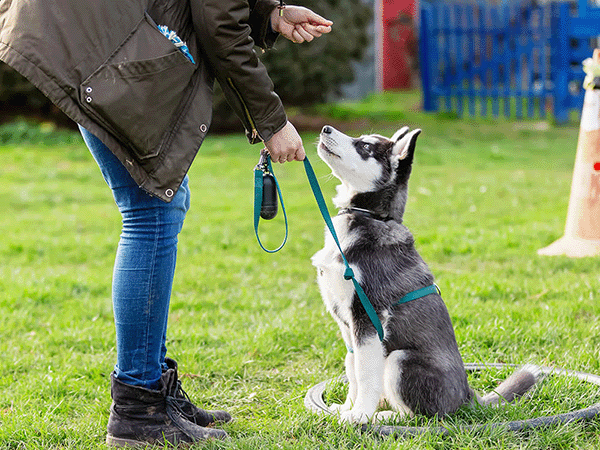
The Best Dog Trainers in the United States of 2025
This is a list of the top dog trainers in the United States, based on votes from the Sniffspot community and the general public.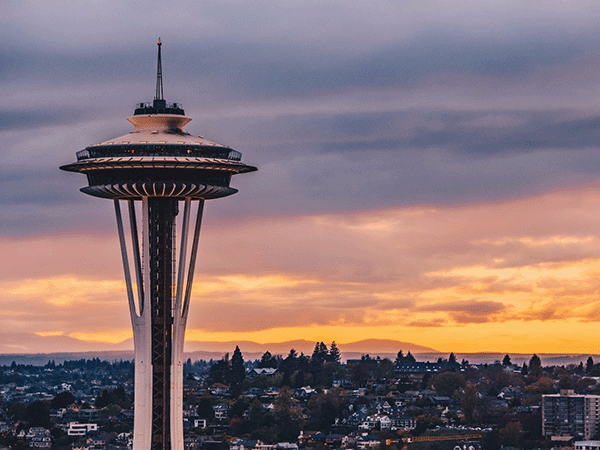
The Best Dog Trainers in Seattle, WA of 2025
This is a list of the top dog trainers in Seattle, WA, based on votes from the Sniffspot community and the general public.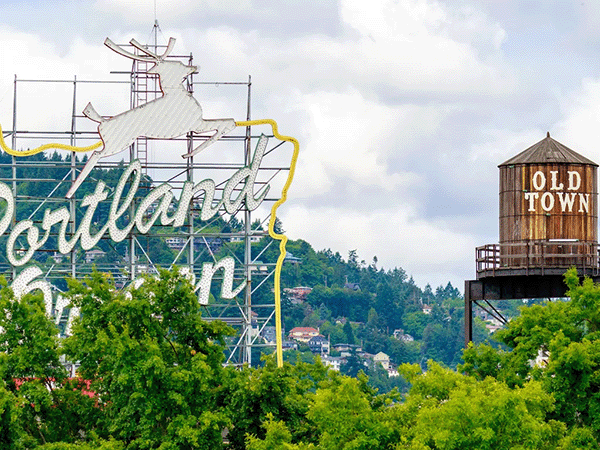
The Best Dog Trainers in Portland, OR of 2025
This is a list of the top dog trainers in Portland, OR, based on votes from the Sniffspot community and the general public.
The Best Dog Trainers in Los Angeles, CA of 2025
This is a list of the top dog trainers in Los Angeles, CA, based on votes from the Sniffspot community and the general public.
The Best Dog Trainers in New York, NY of 2025
This is a list of the top dog trainers in New York, NY, based on votes from the Sniffspot community and the general public.
City dog parks guides

Top 10 Indoor Dog Parks: A US Guide
Looking for a space to play with your dog no matter what the weather’s like outside? Look no further than our list of the best indoor dog parks in the United States! These climate-controlled spaces are growing in popularity as pet ownership increases throughout the country. As a bonus, many of them also offer dog training, boarding, grooming, or daycare services on the premises.

Best Dog Fields in the US: 25+ Wide-Open Spaces for Your Pup to Run Free
The best dog fields in the US offer something that traditional enclosed parks simply can't match: acres of open space where your pup can truly stretch their legs and run at full speed. From Colorado's 470-acre prairie meadows to Tennessee's award-winning "Outback," these wide-open spaces allow dogs to roam, explore, and exercise naturally while engaging instincts that cramped urban parks suppress.

Best Dog Parks in the US: Ultimate Guide to Public & Private Off-Leash Adventures
Is your pup giving you those pleading "let me run free" eyes? Whether you're a new dog parent or a seasoned pro looking for fresh adventures, finding the perfect off-leash paradise for your furry friend can feel ruff! From sun-soaked California beaches where your water-loving lab can make a splash to mountain trails in Vermont where your adventure buddy can chase every scent, we've sniffed out the 15 best dog parks across America.

Dog Parks Near Me: Las Vegas Edition
Looking for the perfect dog park near me in Las Vegas? You're in luck! This guide explores all the best options for your pup, from public dog parks to private dog parks near me on Sniffspot. We'll help you find the ideal spot for playtime, socializing, and fresh air. Plus, we'll cover essential etiquette and safety tips to ensure a happy visit for everyone. Get ready for some tail-wagging fun!

Top Sniffspot Locations: Find the Perfect Dog Park
Looking for the perfect dog park? Whether you need a wide-open public space or a private, fenced-in spot, this guide will help you find the best dog parks across the US. We'll cover top-rated public parks, the perks of private dog parks, and even explore Sniffspot locations – giving your pup a safe and fun place to play. Ready to find your dog's new favorite spot? Let's go!

Sniffspot: Portland's Best Private Dog Parks
Ready to discover Portland's best dog parks? Whether you're looking for a public park or the unique experience of a private Sniffspot, this guide has you covered. We'll help you find the perfect spot for your pup, with tips on what to bring, how to prepare, and even understanding dog body language. Plus, we'll explore some top Portland dog parks, including public and Sniffspot options, so you can plan your next dog-friendly adventure in the City of Roses.
Portland Dog Parks: Public & Private Options
This page is about public city dog parks and also includes Sniffspot private dog parks. Sniffspot is the largest network of private dog parks for rent in the world!
Small Dog Park Guide: Tips for Finding the Perfect Spot
Finding the perfect dog park for your small breed can be ruff! Big dog parks can be overwhelming, even dangerous, for little pups. This comprehensive guide helps you sniff out the best small dog parks for your pint-sized companion, covering everything from essential safety checklists to top recommendations for small dog parks across the US—including both public spots and private dog parks.
Dogs breeds

German Shepherd Dogs: Insights From Real Dog Owners
The German Shepherd Dog (GSDs) are known for their intelligence, loyalty, and striking appearance. They're also incredibly versatile, excelling as working dogs and devoted family companions. This guide covers everything you need to know about GSDs, from understanding their unique traits and rich history to practical advice on training and care. So, whether you're a seasoned GSD owner or just starting your research, let's explore this remarkable breed together.

Best Dog Fields in the US: 25+ Wide-Open Spaces for Your Pup to Run Free
The best dog fields in the US offer something that traditional enclosed parks simply can't match: acres of open space where your pup can truly stretch their legs and run at full speed. From Colorado's 470-acre prairie meadows to Tennessee's award-winning "Outback," these wide-open spaces allow dogs to roam, explore, and exercise naturally while engaging instincts that cramped urban parks suppress.

Labrador Retriever: Ultimate Guide by Owners
Discover the Labrador Retriever, a breed celebrated for its playful nature, affectionate temperament, and trainability. Labradors are known for their friendly demeanor and adaptability, making them perfect family companions and versatile working dogs. As one of the most popular types of retrievers, Labs are ideal companions for various lifestyles and are recognized by the American Kennel Club (AKC) as an excellent breed for families.

Golden Retriever Advice: The Complete Owner's Guide
Golden Retrievers: they're gorgeous, playful, and incredibly popular. But before you welcome one into your home, you need the right golden retriever advice. This guide draws on the wisdom of nearly 10,000 Golden Retriever owners, offering practical tips for caring for these affectionate dogs. From understanding their high energy levels to mastering grooming and training, we'll cover everything you need to know. So whether you're already a devoted Golden parent or just starting your research, get ready to learn how to give your furry friend the best possible care.

American Staffordshire Terrier: Your Complete Guide
Think American Staffordshire Terriers are tough? Think again. While their muscular build might intimidate some, these dogs are known for their playful and loyal personalities. This guide draws on the experience of nearly 10,000 AmStaff owners to reveal the truth about this often misunderstood breed. Want to learn more about caring for an American Staffordshire Terrier? You're in the right place.

Australian Shepherd Facts: Breed Info & Care Guide
Discover the Australian Shepherd, an AKC breed celebrated for its trainable, playful, and affectionate nature. Despite its name, the Australian Shepherd is actually a native breed to the United States, originally developed to breed on farms and ranches. Considered a medium dog, Australian Shepherds were bred for herding beginning in the 1950s. As one of the high-energy breeds, Aussies are known for their boundless energy and need for regular exercise, including aerobic exercise.

Essential Husky Facts for Owners: Breed Guide
Discover the Siberian Husky, a breed celebrated for its curious, intelligent, and loyal nature. Considered a medium-sized dog, Siberian Huskies were originally bred in Russia for sledding, beginning in the early 20th Century. Today, they're one of the most popular active breeds in North America.










